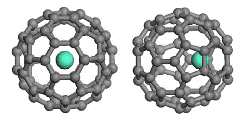Chemistry, Department of: Faculty Series

Xiao Cheng Zeng Publications
Document Type
Article
Date of this Version
2014
Citation
Nanoscale (2014); DOI: 10.1039/c4nr00783b
Abstract
We perform a comprehensive first-principles study of the electronic properties of van der Waals (vdW) trilayers via intercalating a twodimensional (2D) monolayer (ML = BN, MoSe2, WS2, orWSe2) between a MoS2 bilayer to form various MoS2/ML/MoS2 sandwich trilayers. We find that the BN monolayer is themost effective sheet to decouple the interlayer vdW coupling of the MoS2 bilayer, and the resulting sandwich trilayer can recover the electronic structures of the MoS2 monolayer, particularly the direct-gap character. Further study of the MoS2/BN superlattices confirms the effectiveness of the BN monolayer for the decoupling of the MoS2–MoS2 interaction. In addition, the intercalation of a transition-metal dichalcogenide (TMDC) MoSe2 or WSe2 sheet makes the sandwich trilayer undergo an indirect-gap to direct-gap transition due to the newly formed heterogeneous S/Se interfaces. In contrast, the MoS2/WS2/MoS2 sandwich trilayer still retains the indirect-gap character of the MoS2 bilayer due to the lack of the heterogeneous S/Se interfaces. Moreover, the 3D superlattice of the MoS2/TMDC heterostructures also exhibits similar electronic band characters to the MoS2/TMDC/MoS2 trilayer heterostructures, albeit a slight decrease of the bandgap compared to the trilayers. Compared to the bulk MoS2, the 3D MoS2/TMDC superlattice can give rise to new and distinctive properties. Our study offers not only new insights into electronic properties of the vdW multilayer heterostructures but also guidance in designing new heterostructures to modify electronic structures of 2D TMDC crystals.


Comments
Copyright 2014 The Royal Society of Chemistry